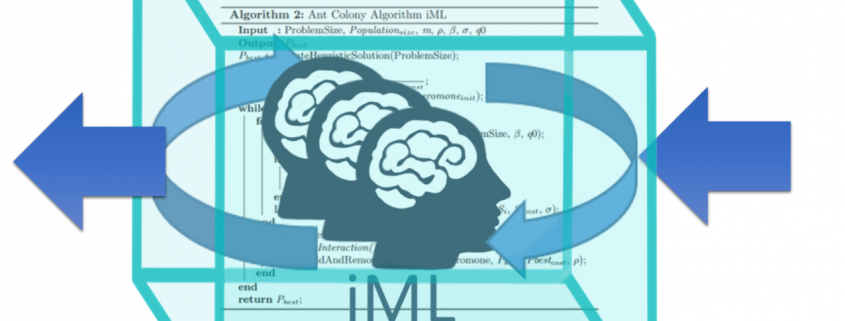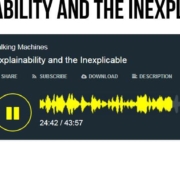Interactive Machine Learning: Experimental Evidence for the human-in-the-loop
Recent advances in automatic machine learning (aML) allow solving problems without any human intervention, which is excellent in certain domains, e.g. in autonomous cars, where we want to exclude the human from the loop and want fully automatic learning. However, sometimes a human-in-the-loop can be beneficial – particularly in solving computationally hard problems. We provide new experimental insights [1] on how we can improve computational intelligence by complementing it with human intelligence in an interactive machine learning approach (iML). For this purpose, an Ant Colony Optimization (ACO) framework was used, because this fosters multi-agent approaches with human agents in the loop. We propose unification between the human intelligence and interaction skills and the computational power of an artificial system. The ACO framework is used on a case study solving the Traveling Salesman Problem, because of its many practical implications, e.g. in the medical domain. We used ACO due to the fact that it is one of the best algorithms used in many applied intelligence problems. For the evaluation we used gamification, i.e. we implemented a snake-like game called Traveling Snakesman with the MAX–MIN Ant System (MMAS) in the background. We extended the MMAS–Algorithm in a way, that the human can directly interact and influence the ants. This is done by “traveling” with the snake across the graph. Each time the human travels over an ant, the current pheromone value of the edge is multiplied by 5. This manipulation has an impact on the ant’s behavior (the probability that this edge is taken by the ant increases). The results show that the humans performing one tour through the graphs have a significant impact on the shortest path found by the MMAS. Consequently, our experiment demonstrates that in our case human intelligence can positively influence machine intelligence. To the best of our knowledge this is the first study of this kind and it is a wonderful experimental platform for explainable AI.
[1] Holzinger, A. et al. (2018). Interactive machine learning: experimental evidence for the human in the algorithmic loop. Springer/Nature: Applied Intelligence, doi:10.1007/s10489-018-1361-5.
Read the full article here:
https://link.springer.com/article/10.1007/s10489-018-1361-5










